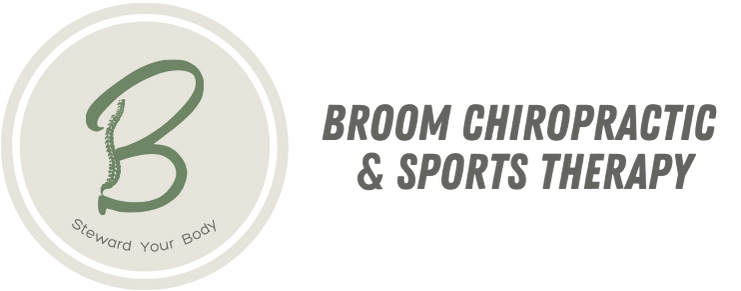Chiropractic Defined: Hands-On Healing
For many, the word chiropractic often conjures up images of spinal "cracks" and quick adjustments. But what if we told you that chiropractic is much more than that? It’s rooted in a hands-on healing tradition that dates back not only to the foundational principles of modern chiropractors but to ancient civilizations that valued movement, nutrition, and self-discipline as keys to human flourishing. Let’s explore what chiropractic really is, clearing up misconceptions and emphasizing its holistic and functional approach.
What Is Chiropractic Care Really About?
At its core, chiropractic is about restoring optimal function to the body’s musculoskeletal and nervous systems. While traditional chiropractic emphasized spinal subluxations as the cause of disease, modern evidence-based chiropractors have embraced a broader, functional approach. This includes:
- Manual adjustments to restore proper joint mechanics.
- Soft tissue therapies to release tension, reduce pain, and improve range of motion.
- Functional rehabilitation to re-train movement patterns and address the root cause of dysfunction.
- Patient education to empower individuals in their recovery and long-term wellness journey.
This approach moves beyond the old perception of "quick fixes" and instead focuses on long-term healing through hands-on care.
Ancient Wisdom and Chiropractic’s Roots
While chiropractic as a profession began with D.D. Palmer in 1895, the philosophy of hands-on healing is much older. Classical Greek and Roman societies emphasized the connection between physical movement, diet, and overall health — ideas that parallel modern chiropractic care.
- Hippocrates, the father of medicine, was one of the first to discuss the importance of spinal health, stating: “Get knowledge of the spine, for this is the requisite for many diseases.” His use of manual techniques to treat spinal issues laid the groundwork for future manual medicine.
- Plato and Aristotle highlighted the importance of exercise and its role in developing both the body and mind. Plato’s concept of gymnastic training was not just physical exercise but a form of self-discipline designed to strengthen character and promote overall well-being.
- The Romans, particularly Galen, applied these principles practically, using hands-on techniques to treat gladiators’ injuries and incorporating early rehabilitation exercises that resonate with modern functional rehab.
The Greeks referred to this training and lifestyle as gymnastikē — a holistic system involving movement, diet, and discipline to achieve human excellence. Today’s chiropractic care mirrors this holistic vision by integrating manual therapy, functional movement, and nutritional advice.
The Mind-Body Connection: A Timeless Principle
Ancient thinkers like Plato believed in the inseparable nature of the body and mind, a belief that persists in chiropractic care today. In fact, Plato warned against focusing solely on physical training without mental discipline, saying that it could lead to an imbalance detrimental to health.
In modern chiropractic, we address the biopsychosocial model of health, recognizing that chronic pain, dysfunction, and poor movement patterns often have multiple causes—including physical, emotional, and lifestyle factors. By combining manual adjustments, therapeutic exercises, and patient education, chiropractors promote a more integrated approach to healing.
The Role of Nutrition and Self-Discipline
The ancient Greeks understood that exercise without proper nutrition was incomplete. Hippocrates’ quote, "Let food be thy medicine," reflects a timeless truth—that the quality of the food we eat directly affects how well our bodies perform and heal. The same principle holds in chiropractic care.
As we guide patients through recovery, we emphasize:
- Nutrient-dense, anti-inflammatory foods that support healing and reduce chronic inflammation.
- Avoiding processed foods that may worsen systemic inflammation.
- Hydration and supplementation when necessary to optimize joint health, muscle recovery, and nerve function.
Additionally, the idea of self-discipline from ancient gymnastic training applies to the rehab exercises we assign to patients. Just as the Greeks believed that self-mastery over the body translated into better mastery over life, sticking to prescribed movement routines and committing to long-term lifestyle changes are essential components of healing.
Why Hands-On Healing Still Matters in a Tech-Driven World
In a world dominated by fancy clinical gadgets like shockwave therapy, cold lasers, and decompression machines, there’s still something unique about the skilled hands of a practitioner. Legendary manual therapist Karl Lewit once said that his best treatment would be his last one—because by then, his hands would carry decades of refined clinical experience.
Manual therapy involves more than mechanical application—it’s about tactile learning, muscle memory, and real-time feedback. Through our hands, we can feel subtle restrictions, tissue tension, and compensatory patterns that no machine can replicate. This hands-on approach builds trust with patients and allows for more personalized care.
At Broom Chiropractic, we combine this hands-on expertise with modern rehab methods like Dynamic Neuromuscular Stabilization (DNS), Functional Range Conditioning (FRC), and neurodynamics to correct movement patterns and promote long-term function.
How Chiropractic Embodies Ancient and Modern Wisdom
By integrating manual therapy, functional rehab, and nutritional support, chiropractic care today carries forward the wisdom of ancient gymnastic training while staying grounded in modern evidence-based practices. The emphasis on self-discipline, long-term healing, and treating the body as a whole is what makes chiropractic a powerful force in healthcare.
Just as the Greeks believed in balancing mind and body for a life of excellence, we aim to help our patients achieve that same balance—restoring function, relieving pain, and equipping them with the tools to maintain optimal health.
Clearing Up Misconceptions: What We Want Patients to Know
To wrap up, here are some key points we want to educate patients about:
- Chiropractic isn’t just about adjustments. It’s about restoring proper function through a combination of manual therapy, movement retraining, and lifestyle changes.
- Hands-on care is still at the heart of what we do. Skilled hands can assess and treat problems that machines can’t.
- Healing is a holistic process. Nutrition, exercise, stress management, and proper movement are all interconnected.
- Commitment and self-discipline play a huge role in recovery. Our approach empowers patients to take charge of their own health.
-Dr. Broom
